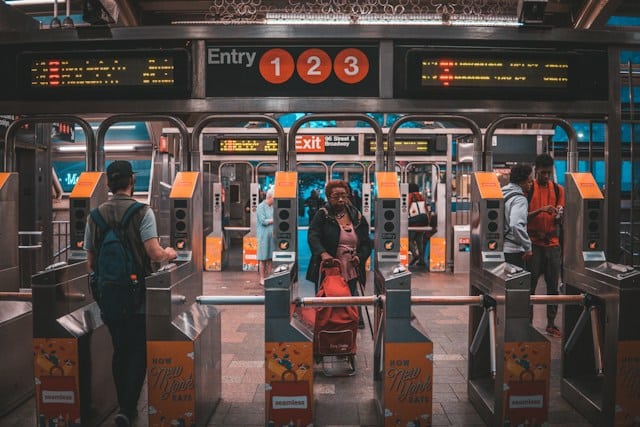In the realm of urban planning and public service provision, one facet that can’t be ignored is addressing the needs of all individuals in society. This includes the elderly, people with disabilities, and those who are often overlooked in the design process. Inclusive design is a philosophy that seeks to rectify this oversight, ensuring that products, services and environments are accessible to everyone. Today, we will explore how inclusive design principles can be applied specifically in the context of public transportation. By making transportation systems more accessible, urban spaces become more democratic and equitable, truly serving the community in its entirety.
Understanding Inclusive Design
Before we delve into how it can be applied to public transportation, it’s crucial to have a proper understanding of what inclusive design entails. Inclusive design, also known as universal design, is centered on designing systems, services, and environments that can be used and accessed by as many people as possible. It encompasses a broad range of dimensions, from digital experiences to physical infrastructure.
A lire en complément : What impact does eco-friendly packaging have on the reduction of single-use plastics?
Inclusive design is not just about catering to people with disabilities or special needs. It encapsulates a broader societal understanding that every individual has unique needs and experiences. The key is to design services and systems that are flexible, adaptable, and accommodating of these individual needs, whether digital or physical.
Application of Inclusive Design in Public Transportation
Now that we are clear on what inclusive design is, let’s delve into its application in public transportation. Transportation plays a profound role in how individuals interact with society. It is the lifeline that connects people to opportunities, services, and each other. Unfortunately, transport systems often fall short when it comes to accessibility for all.
Dans le meme genre : Can virtual reality simulations improve disaster preparedness and response training?
To enhance accessibility in public transport, it is crucial to take into account the entire journey – from planning the trip to reaching the destination. This includes not only the vehicles themselves but also the related infrastructure such as stations, platforms, bus stops, and even the digital platforms used for information and ticketing.
Inclusive design in public transportation involves redesigning these structures and systems to ensure they are accessible to all. This could mean incorporating ramps and lifts for individuals with mobility impairments, ensuring clear signage and voice announcements for those with visual impairments and making ticket machines and apps usable for all.
Making Public Transportation Inclusive: Key Considerations
To make public transportation truly accessible, various aspects must be given consideration while applying the principles of inclusive design. Firstly, the process must involve engagement with users. Understanding the needs and experiences of individuals who use public transportation is key to designing services and systems that are truly inclusive.
Secondly, the design should be intuitive and easy-to-use. From buying a ticket to finding the correct platform, each process should be simple and straightforward. This requires clear signage, easy-to-read maps and digital platforms that are user-friendly.
Lastly, inclusive design requires a commitment to ongoing improvement. Accessibility is not a one-time fix but a continuous endeavor. Regular audits and feedback from users should be incorporated into the improvement process.
The Role of Digital Technology in Inclusive Public Transportation
Digital technology has the potential to transform the accessibility of public transportation. From planning journeys and purchasing tickets to finding real-time information about routes and delays, digital platforms can significantly enhance the experience of using public transport.
However, it’s crucial that these digital platforms are also designed with inclusivity in mind. This means ensuring that websites, apps and other digital services used in public transportation are accessible to individuals with varying abilities and needs.
To achieve this, inclusive digital design principles must be applied. This could mean ensuring that websites are compatible with screen readers for visually impaired users, or designing apps that can be navigated using only voice commands. Similarly, information should be available in multiple formats, such as text, audio and visual, to cater to different users’ needs.
In conclusion, the application of inclusive design principles in public transportation has the potential to significantly enhance accessibility for all users. By considering the unique needs of each individual and utilizing digital technology effectively, public transportation can be made truly inclusive.
Inclusion Through Digital Resources in Public Transport
The eruption of the COVID pandemic has indeed brought about an increased reliance on digital platforms, including in the area of public transportation. As we navigate through the new normal, the integration of digital resources in our transportation systems can play a significant role in promoting universal accessibility.
A key aspect of inclusive design is the understanding that different people have different abilities. Some may have a visual impairment, some may have mobility issues while others may have cognitive disabilities. With this understanding, digital resources such as websites, apps, and other platforms need to be designed in a manner that caters to these diverse needs.
For instance, for people with visual impairments, screen readers can be integrated into websites and apps to read aloud the text displayed on the screen. This assists in navigation and helps the visually impaired to access all the services offered. Similarly, voice recognition can aid those who may have difficulty in using their hands to operate a device.
Not forgetting the elderly population and those not adept with technology, the design of these digital resources should be simple, intuitive, and easy to navigate. The use of clear language, large fonts, bright colors, and simple instructions can go a long way in ensuring ease of use.
Looking Forward: Creating Inclusive Spaces in Public Transport
As we look to the future, it’s clear that the principles of inclusive design have a significant role to play in shaping our public transportation. Transport operators have a duty to ensure that their services are barrier-free and cater to the needs of all individuals, regardless of their abilities.
While the adoption of inclusive design principles has started gaining traction, there is still a long way to go. Urban transport systems need to be more than just physically accessible. They need to be user-friendly, intuitive, and flexible enough to accommodate the diverse needs of their users.
One way to ensure this is by actively seeking and incorporating feedback from users. Users are the best judge of the accessibility and usability of a system. Their feedback can provide valuable insights into areas that need improvement and help in creating truly inclusive spaces.
In the context of the COVID pandemic, hygiene and safety have also emerged as key considerations. Touch-free alternatives such as contactless payments and automatic doors should be incorporated wherever possible to minimize the risk of virus transmission.
To sum it up, a concerted effort is needed from all stakeholders- from urban planners to transport operators and even the users themselves- to ensure that our public transportation systems are truly inclusive. By utilizing digital technology and applying the principles of inclusive design, we can ensure that our public transport is barrier-free and accessible to all.
Conclusion
The application of inclusive design principles to public transportation systems is a crucial step towards creating equitable and democratic urban spaces. By considering the unique needs of every individual, from the elderly to people with disabilities, and leveraging digital resources, we can transform public transportation into an inclusive and accessible service.
The journey to inclusive public transportation is a continuous one- there is always room for improvement and innovation. However, with active engagement, commitment to universal accessibility, and effective use of digital technology, we can ensure that our public transportation systems truly serve all members of the community.
In the face of challenges such as the Covid pandemic, the importance of inclusive design in public transport has been accentuated. Let us continue to strive towards a future where everyone, regardless of their abilities or disabilities, can navigate our cities with ease and dignity.






